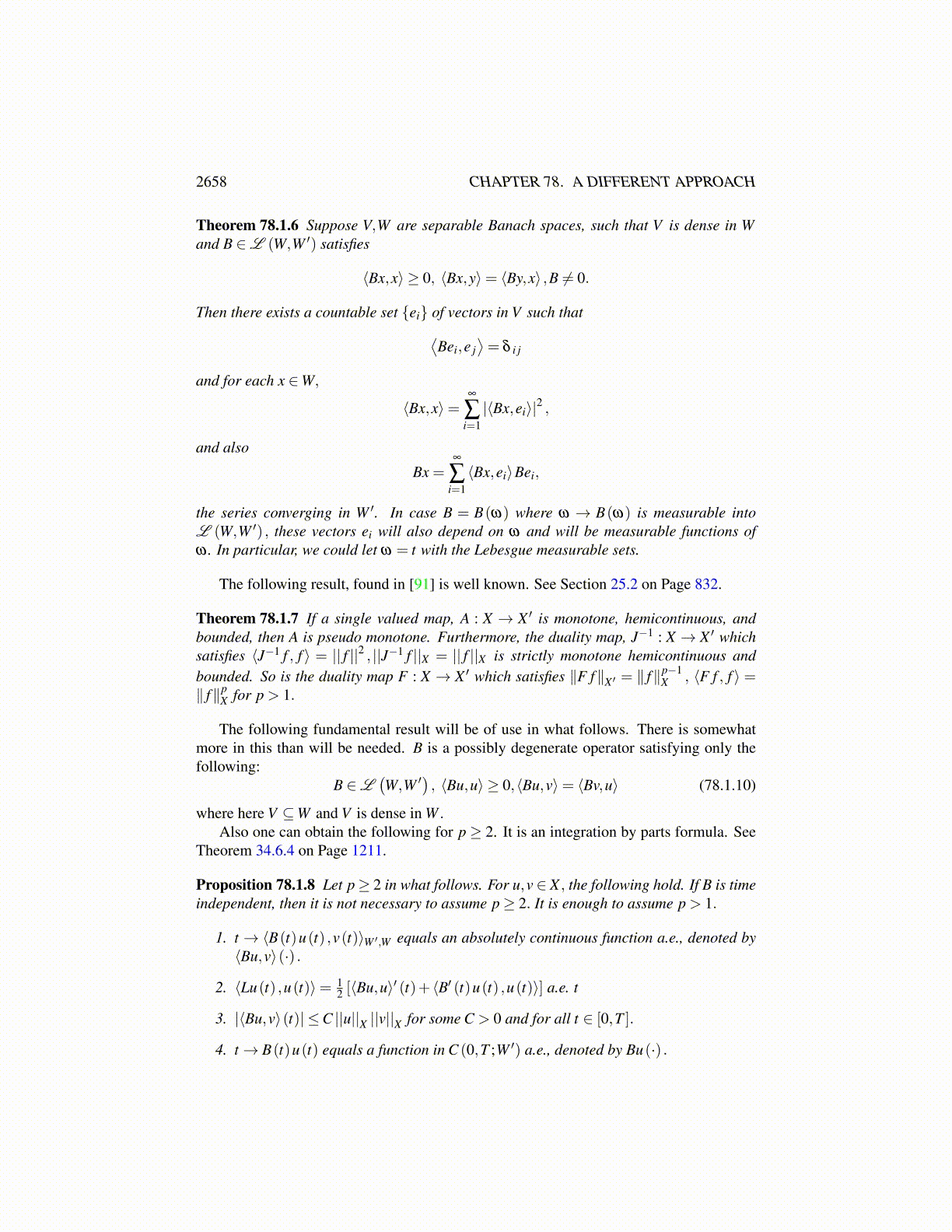
2658 CHAPTER 78. A DIFFERENT APPROACH
78.1.2 Preliminary ResultsWe use the following well known theorem [91]. It is stated here for the situation in whicha Holder condition is given rather than a bound on weak derivatives. See Theorem 34.7.6on Page 1219.
Theorem 78.1.2 Let E ⊆ F ⊆ G where the injection map is continuous from F to G andcompact from E to F. Let p≥ 1, let q > 1, and define
S≡ {u ∈ Lp ([a,b] ,E) : for some C, ∥u(t)−u(s)∥G ≤C |t− s|1/q
and ||u||Lp([a,b],E) ≤ R}.
Thus S is bounded in Lp ([a,b] ,E) and Holder continuous into G. Then S is precompact inLp ([a,b] ,F). This means that if {un}∞
n=1 ⊆ S, it has a subsequence{
unk
}which converges
in Lp ([a,b] ,F) . The same conclusion can be drawn if it is known instead of the Holdercondition that ∥u′∥L1([a,b];X) is bounded.
Next are some measurable selection theorems which form an essential part of showingthe existence of measurable solutions. They are not dependent on there being a measurebut in the applications of most interest to us, there is typically a probability measure. Firstis a basic selection theorem for a set of limits. See Lemma 48.2.2 on Page 1543.
Theorem 78.1.3 Let U be a separable reflexive Banach space. Suppose there is a sequence{u j (ω)
}∞
j=1 in U, where ω → u j (ω) is measurable and for each ω,
supj
∣∣∣∣u j (ω)∣∣∣∣
U < ∞.
Then there exists a function ω→ u(ω) with values in U such that ω→ u(ω) is measurable,and a subsequence n(ω) , depending on ω, such that
limn(ω)→∞
un(ω) (ω) = u(ω) weakly in U.
Next is a specialization to the situation where the Banach space is a function space.The proof is in [88]. This gives a result on product measurability. It is Theorem 77.2.10 onPage 2603.
Theorem 78.1.4 Let V be a reflexive separable Banach space with dual V ′, and let p, p′
be such that p > 1 and 1p + 1
p′ = 1. Let the functions t → un (t,ω), for n ∈ N, be inLp ([0,T ] ;V )≡ V and (t,ω)→ un (t,ω) be B ([0,T ])×F ≡P measurable into V . Sup-pose
∥un (·,ω)∥V ≤C (ω) ,
for all n. (Thus, by weak compactness, for each ω, each subsequence of {un} has a furthersubsequence that converges weakly in V to v(·,ω) ∈ V . (v not known to be P measur-able))
Then, there exists a product measurable function u such that t→ u(t,ω)is in V and foreach ω a subsequence un(ω) such that un(ω) (·,ω)→ u(·,ω) weakly in V .